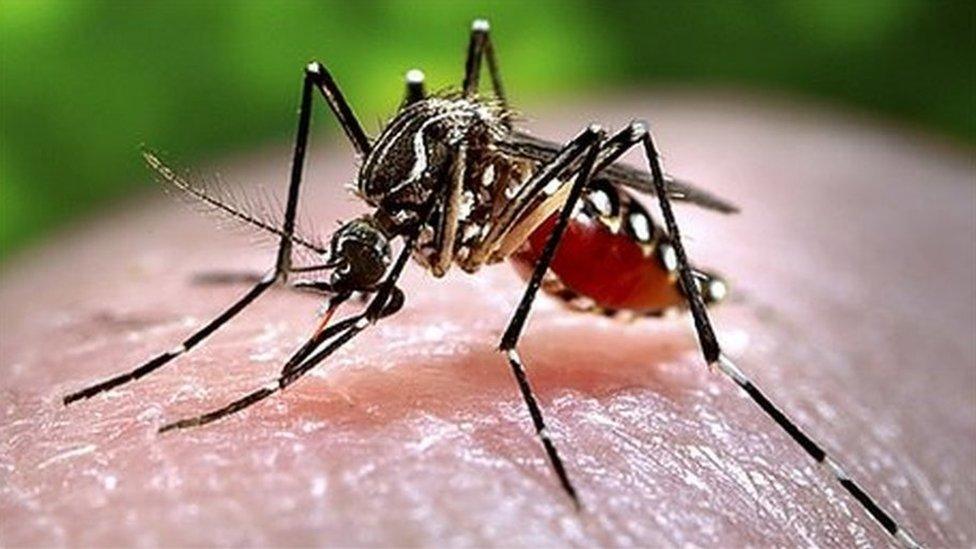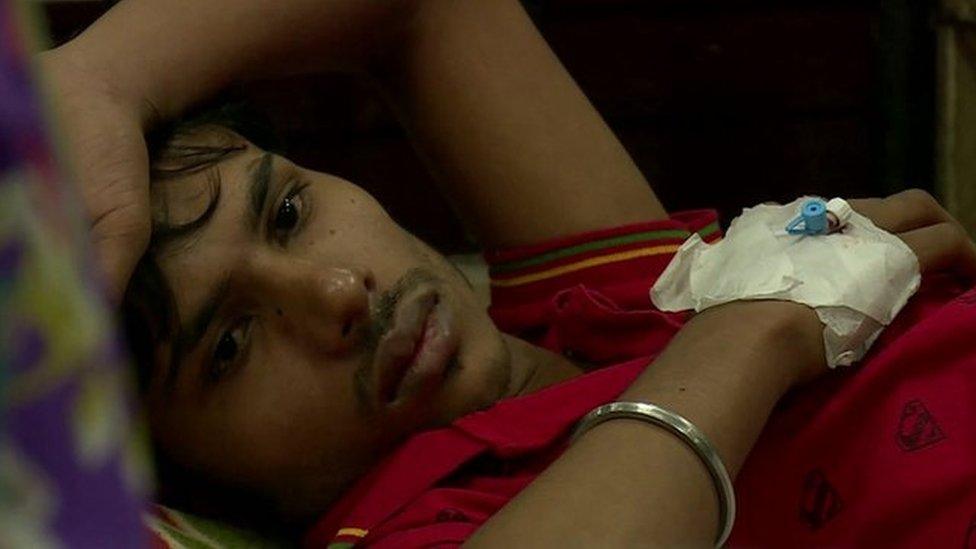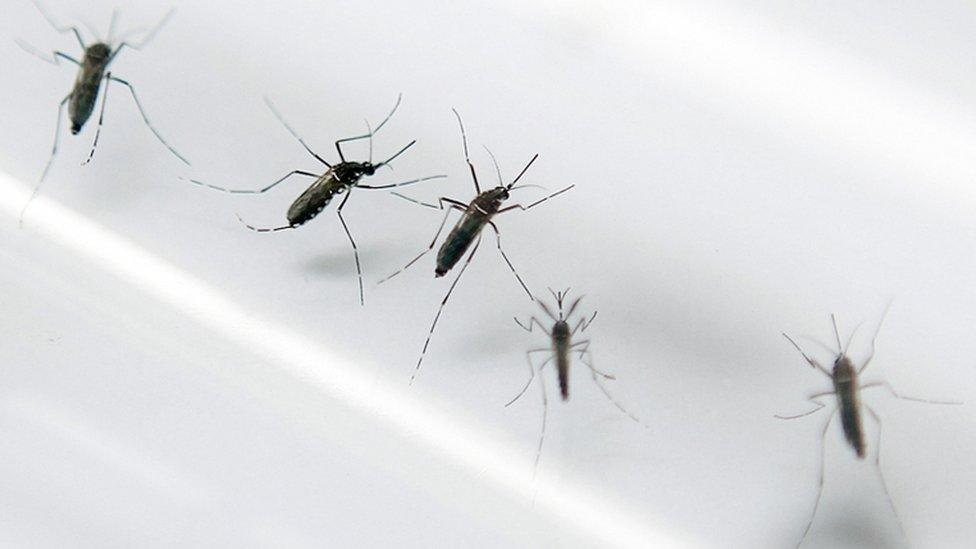Using maths to outsmart mosquitoes
- Published

Researchers at Strathclyde university are working to combat a deadly tropical disease - using mathematics.
Dengue fever is caused by a virus carried by Aedes mosquitoes.
The number of cases has grown dramatically in recent years with close to 60 million people catching it every year.
Although it is fatal in only a small proportion of cases, it means deaths are still in the tens of thousands.

Millions of people catch dengue fever every year
The World Health Organisation says 500,000 people a year need hospital treatment for dengue in Africa, the Americas, the eastern Mediterranean, southeast Asia and the western Pacific.
The currently favoured approach is to search and destroy the mosquitoes using methods such as spraying fogs of insecticides.
But the authorities in Malaysia wanted something more environmentally friendly which did not increase the mosquitoes' resistance and kill their predators.
Which is why the Strathclyde University team, led by mathematician Dr David Greenhalgh, has been working with its Malaysian partners to assess the effectiveness of a new type of mosquito trap.
The exact design is still under wraps but I can reveal that it looks a bit like a yogurt pot.
That belies its huge potential in a new approach to fighting tropical diseases: don't use search and destroy - outsmart the insects.
"The trap contains a chemical solution that attracts female mosquitoes into it," Dr Greenhalgh says.
"There's a piece of paper leading into the chemical solution.
"The female mosquitoes that are attracted to the trap lay their eggs on the piece of paper and the chemical stops the eggs developing."

Dengue fever is spread by the Aedes aegypti mosquito
Mathematics comes into the process because Dr Greenhalgh and colleagues have built a computer model of how the disease spreads.
From that they can simulate how the trap affects the spread of the virus among people and mosquitoes.
He says people go through different stages of the disease.
"There are four different types of dengue, four different serotypes," he says.
"Usually the infection with the first serotype is quite mild.
"But if you get a second infection with a different strain it can have very serious effects."
Dr Greenhalgh adds: "As well as modelling how the people go through those different stages, the mosquitoes also go through different stages.
"So you're trying to model how these populations interact, with mosquitoes biting people, with the disease spreading from people to mosquitoes and vice versa."
The variables in the mathematical model include the number of traps, the area's history of dengue infections, plus the numbers of mosquitoes and breeding sites.
Global scale
So far the indications are that both the simulation and the real life traps are working well.
In a small-scale test in three blocks of flats in Kuala Lumpur the number of dengue cases was reduced from 53 in 2013 to 13 the following year.
In 2015, after the trial was over, the number of infections rose again to 57.
Dr Greenhalgh warns that these are small numbers but also promising ones.
Further research is now examining the effectiveness of the trap in different conditions.
The collaboration is between Strathclyde, Malaysia's Institute for Medical Research and the Kuala Lumpur-based business One Team Network Solutions, which designs low-tech pest control devices.
The UK delivery partner is the British Council Malaysia. The project is being funded by the UK government's Newton Fund and the Malaysian government's High Impact Programme 2.
If the trap and its mathematical model work on a large scale it will have implications for health on a global scale.
- Published21 September 2016
- Published30 September 2015